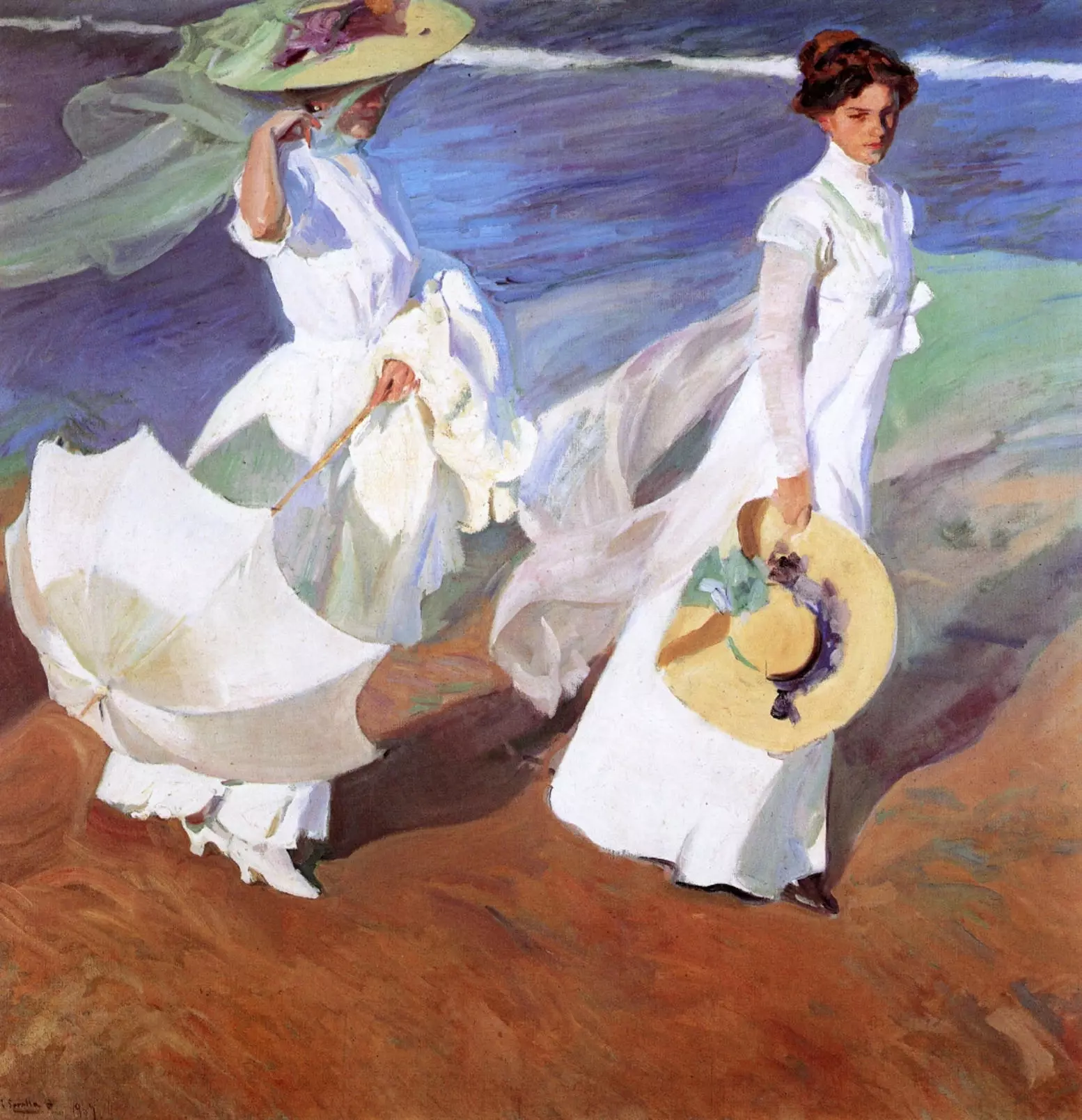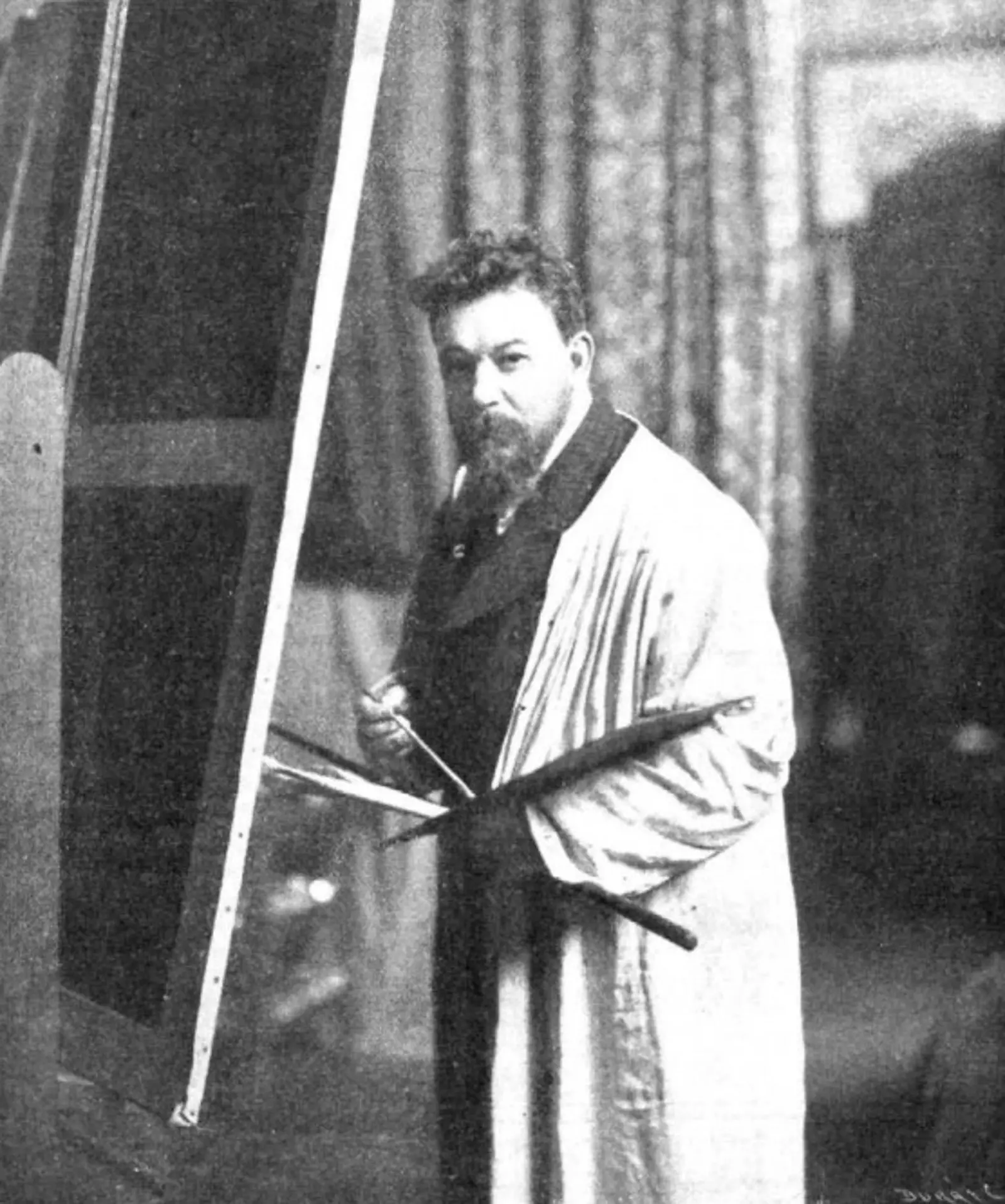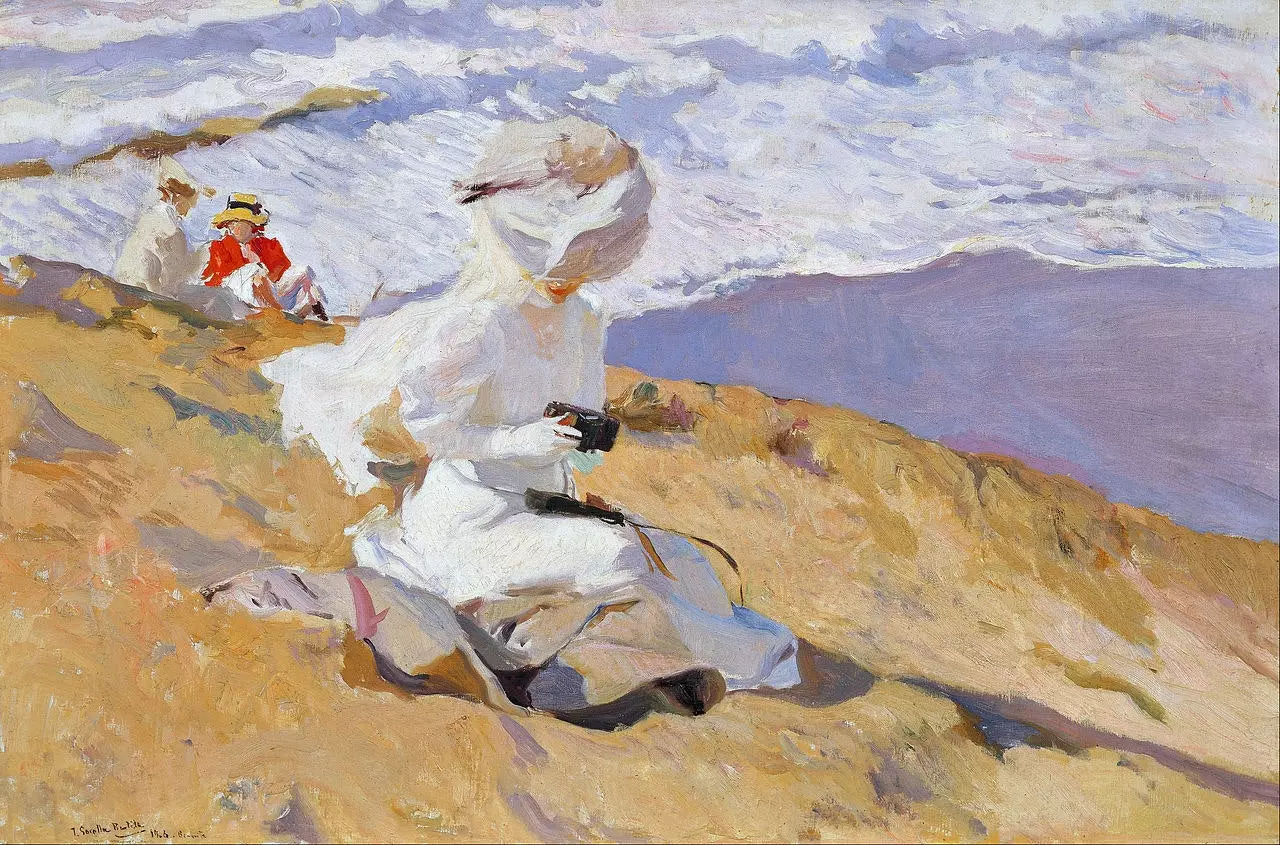
Journey to a painting: 'Walk by the sea', by Joaquín Sorolla
Two women walk on the beach . Their white dresses stand out against the water. One of them carries a parasol and picks up her tulle veil, fluttering in her breeze. At first glance, it might seem that they are walking on the beach, but their high-heeled shoes rest on a rocky promontory. The sea is calm . The evening light lengthens the shadows and enhances the contrasts.
Joaquín Sorolla painted 'Walk by the sea' in 1909 , in Valencia. On the canvas appear his wife, Clotilde, and her daughter Maria . Their posture and the movement of the fabrics place them in a casual moment. The gesture will fade. They will continue walking and the observer will be left behind.
When he painted this work, Sorolla was at the peak of his career . He won the Grand Prix at the Universal Exhibition in Paris in 1900. He had exhibited in Berlin, London, Boston and New York , where 160,000 visitors packed the halls. His clientele had become international. The demand for his works increased.

Joaquin Sorolla
Sorolla was never an intellectual . He didn't pretend to be. His years of training in Valencia had led him towards painting in the open air. Impressionism had arrived in Spain late, in the form of luminism, which focused his attention on the effects of light. During his stay in Paris, his contacts with avant-garde movements did not distract him from his inclination for the spontaneous and sincere reproduction of reality.
He was not a dilettante . His parents died in a cholera epidemic when he was two years old. He worked as an apprentice in a hardware store. Still a teenager, he enrolled in night drawing classes. His gaze was fixed on the next step: the Academy of Fine Arts of Valencia, Madrid, Paris, Rome . He was aware that his social and economic position depended on the prizes he won in the salons, on the satisfaction of those he portrayed.
He had in his favor a talent that sprouted regardless of the subject , but he became more evident immediately: Valencia, the sea, the intimacy of the family . He had married Clotilde at the age of twenty-five. his father, Antonio García Peris, was a photographer . He hired Joaquín in his studio to color negatives. The painter's fondness for photography has persisted ever since, and he exerted a determining influence on his work.
When contemplating 'Walk on the shores of the sea', an immediate affinity with photography arises. Mary, who walks first, she looks at the observer as if he had stopped before a camera . The frame shifts the figures to the upper half, omitting the horizon. Clotilde's hat has been cut as if it exceeded the limits of the objective.
The Impressionists were the first to enthusiastically accept the influence of photography. The relevance of the visual and the rejection of rhetoric led them to embrace this new way of representing reality. A recent exhibition at Thyssen-Bornemisza Museum it showed that the impressionist, like the photographer, bursts onto the scene. He gives priority to time over space. The now prevails over the here.

'Instantaneous', by Joaquín Sorolla
In some of his works, Sorolla started from a photograph. 'My family' , in which he winks at Velazquez's 'Las Meninas' , is based on a picture taken by his mother-in-law. In other cases, as in the portrait of the photographer Christian Franken , set up a game. He shows her next to his tripod camera, pressing the shutter. Franzen, for his part, captures him in his studio, in front of a canvas, with a brush.
In the play' Snapshot' – Maria, the painter's daughter, appears with a Kodak Vista , a leather-covered case with a circular lens and a button on the side for firing. Again, the beach and the veil moved by the breeze. But this time, the lens of a camera responds to the gaze of the artist.
'Walk on the shores of the sea' is exhibited at the Sorolla Museum in Madrid.
